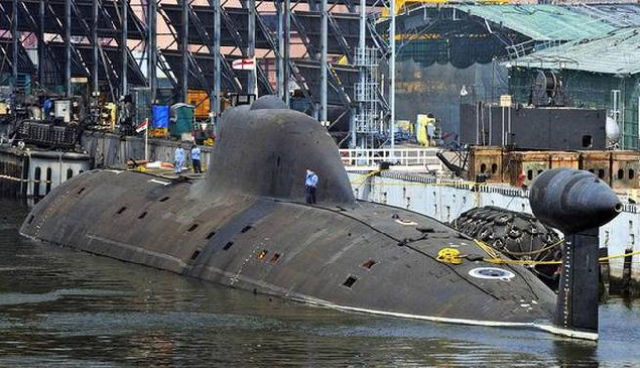Key Indian nuclear submarine damaged
Arihant was India's only operational Ship Submersible Ballistic Nuclear (SSBN) asset

PHOTO: THEHINDU
Arihant is the most important platform within India’s nuclear triad covering land-air-sea modes, The Hindu reported.
Submarine's propulsion compartment was damaged after water entered it, according to details. An Indian naval source said water rushed in as a hatch on the rear side was left open by mistake while it was at harbour.
India initiates ‘mother of all underwater defence deals’
The Ministry of Defence for India did not respond to questions by The Hindu.
Since the accident, the submarine, built under the Advanced Technology Vessel project (ATV), has been undergoing repairs and clean up, the sources said.
Besides other repair work, many pipes had to be cut open and replaced. “Cleaning up” is a laborious task in a nuclear submarine, the naval source said.
The Arihant issue rose soon after INS Chakra, the Nerpa class nuclear submarine leased from Russia, was reported to have suffered damage to its sonar domes while entering the Visakhapatnam harbour in early October.
India launches 2nd home-assembled submarine
However, INS Chakra has only a peripheral role in the nuclear triad, for both training and escorting, and Arihant is the one that will carry nuclear missiles.
The absence of Arihant from operations came to the political leadership’s attention during the India-China military standoff at Doklam. Whenever such faceoff takes place, countries carry out precautionary advance deployment of submarine assets. Arihant (Code name S2) came into the limelight on July 26, 2009.
After that, the submarine was towed to an enclosed pier for extensive harbour trials from the dry docks at Ship Building Centre, away from public view. Arihant was quietly commissioned into service in August 2016 and its induction is still not officially acknowledged. It is powered by an 83 MW pressurised light-water reactor with enriched uranium.
The plan was to build three such submarines. In 2009, Arihant was launched into the water at the ship-building centre in Visakhapatnam.
India, in July 2017 has kick-started its “mother of all underwater defence deals” after a 10-year delay, with France, Germany, Russia, Sweden, Spain and Japan being in the fray to build six advanced stealth submarines for an estimated $10.9 billion with an Indian shipyard.
The conventional submarine programme called Project-75 is likely to be the first mega project under the new “strategic partnership” policy finalised by India’s defence ministry in May. However, the six shipbuilders, Naval Group-DCNS (France), ThyssenKrupp Marine Systems (Germany), Rosoboronexport Rubin Design Bureau (Russia), Navantia (Spain), Saab (Sweden) and the Mitsubishi-Kawasaki Heavy Industries combine (Japan), have to first respond to the RFI (request for information) issued to them by September 15, 2017.
This article originally appeared on The Hindu.


















COMMENTS
Comments are moderated and generally will be posted if they are on-topic and not abusive.
For more information, please see our Comments FAQ